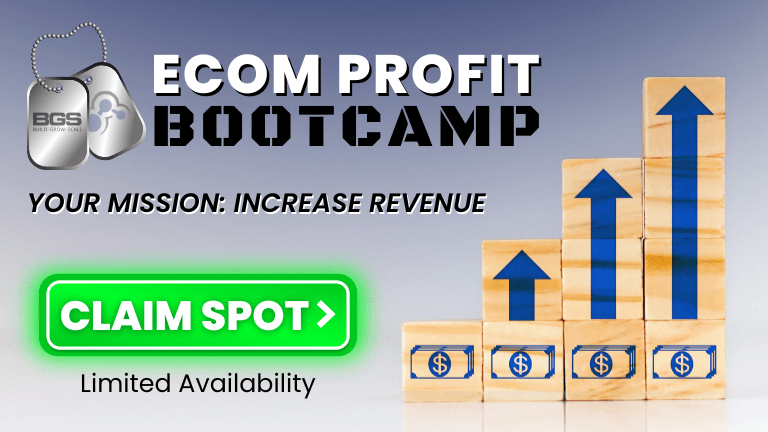Distinguishing User Testing from Usability Testing (Differences and Which is Better)

Are you looking to improve your website or app’s user experience? If so, you may have heard of user testing and usability testing. While these two terms may sound similar, they actually refer to different methods of testing and evaluating the user experience.
User testing involves observing and gathering feedback from real users as they interact with your website or app. This can include tasks such as completing a purchase or navigating through different pages. Usability testing, on the other hand, focuses on evaluating the overall usability and ease of use of your website or app, often through expert evaluations or heuristic analysis.
In this article, we’ll dive deeper into user testing vs usability testing, so you can determine which approach is best for improving your digital product’s user experience.
What is the difference between user and usability testing?
The difference is simple. User testing involves observing real users as they interact with a product, such as a website or app, and gathering their feedback. On the other hand, usability testing focuses on assessing the overall usability and ease of use of a product, often through expert evaluations or heuristic analysis.
Goals Of User Testing
When designing user experiences, one of the most important things you can do is get feedback from your users. User testing is a popular method for gathering this feedback, and it involves observing users as they interact with your product or website.
There are many benefits to user testing, such as identifying pain points in the user experience, gaining insights into how users think and behave, and uncovering new opportunities for innovation.
However, there are also some limitations to user testing that you should be aware of. For example, it can be time-consuming and expensive to recruit participants for a test. Additionally, the results of a user test may not always be representative of your target market or may be influenced by factors like the tester’s familiarity with technology or personal biases.
There are several types of user testing that you can choose from depending on your needs. Some common types include usability testing (which focuses on how easy it is for users to complete specific tasks), A/B testing (which compares two versions of a product to see which performs better), and heuristic evaluation (which uses expert evaluators to identify potential usability issues).
It’s important to note that while user testing is similar in some ways to market research (which focuses on understanding customers’ needs and preferences), there are some critical differences between the two approaches. Market research tends to be more focused on gathering quantitative data through surveys or other methods, whereas user testing is more qualitative in nature and involves observing users as they complete tasks.
When conducting a user test, there are several metrics that you may want to track to measure success. These might include things like completion rate (i.e., how many users were able to complete the task successfully), time on task (i.e., how long it took users to complete the task), and satisfaction score (i.e., how satisfied users were with their experience).
By tracking these metrics over time, you can gain valuable insights into how your product or website is performing and identify areas for improvement.
Goals Of Usability Testing
Now that we know the user testing goals, let’s dive into usability testing.
While user testing focuses on gathering user feedback and insights on a product or service, usability testing aims explicitly to evaluate how easy it is for users to complete tasks and achieve their goals with the product.
The main objective of usability testing is to identify any obstacles or issues that may hinder task completion and ultimately impact user satisfaction.
Through this process, testers can observe users as they interact with the product and identify areas where improvements can be made in terms of design, functionality, and overall usability.
One key aspect of usability testing is error identification. Testers actively seek out mistakes made by users while completing tasks in order to pinpoint areas where the product may be confusing or difficult to navigate.
By identifying these errors, designers can make necessary changes to improve the overall usability of the product.
Ultimately, the end goal of usability testing is to design improvements based on user feedback and observation.
The insights gathered during this process can help designers create a more intuitive and enjoyable user experience while interacting with their product or service.
By prioritizing ease of use and task completion, designers can increase user satisfaction and ultimately drive business success.
By conducting thorough usability testing, businesses can ensure their products are meeting the needs of their users while also identifying opportunities for improvement.
With a focus on task completion, error identification, and design improvements based on user feedback, businesses can create products that are intuitive, enjoyable to use, and ultimately successful in achieving their goals.
Methods Of User Testing
When it comes to optimizing the user experience of a digital product, user testing is one of the most powerful tools at your disposal. However, not all user testing methods are created equal. One popular form of user testing is usability testing, but how does it differ from other types of user testing?
User Testing methods vary widely, but they all share one common goal: to gather feedback from users about how they interact with a product. Usability testing is a specific subset of these methods that focuses on evaluating a product’s ease of use.
This typically involves recruiting participants who match the product’s target audience and asking them to perform specific tasks while using the product. Test scenarios are carefully crafted to mimic real-life situations that users might encounter when using the product.
The goal is to see how easily participants can complete these tasks and identify any areas where they struggle or become frustrated. Test documentation, such as notes and recordings, are collected during the process for later analysis. Participant recruitment is crucial for ensuring that usability testing produces accurate results.
Testers should aim to recruit individuals who represent their target audience in terms of demographics, skill level, and familiarity with the product domain. Additionally, testers must create an environment that allows participants to feel comfortable enough to give honest feedback. Data analysis is another key aspect of usability testing.
Once the test sessions have been completed, testers analyze the data collected during each session to identify patterns and trends in participant behavior. This information can then be used to improve the product design or development process. In summary, usability testing is just one method within a broader range of User Testing techniques available today.
Properly executed usability tests require careful planning and execution – including participant recruitment and test documentation – in order to produce meaningful results that can inform design decisions. By taking these steps, companies can ensure their products meet the needs and expectations of their users while providing an enjoyable experience that keeps them coming back for more!
Methods Of Usability Testing
As we’ve discussed in the previous section, user testing is an essential component in the product development process. However, another important aspect that deserves attention is usability testing. While both terms are often used interchangeably, there are key differences between the two.
One of the main distinctions is that user testing focuses on observing how users interact with a product, while usability testing evaluates how well a product meets specific performance criteria. This involves conducting comparative analysis against industry standards and benchmark testing to see how well a product stacks up against its competitors.
Controlled experiments are also commonly used in usability testing to evaluate specific features or design elements. This allows for more objective data collection and analysis, as opposed to relying solely on subjective feedback from users.
Another method frequently employed in usability testing is heuristic evaluation, which involves expert evaluators assessing a product’s design based on established usability principles. This can provide valuable insights into areas for improvement and potential issues that may impact user experience.
Finally, focus groups can also be utilized in usability testing to gather qualitative feedback from users about their experiences with a product. This can help identify common pain points and inform future design decisions.
Overall, while user testing and usability testing share some similarities, it’s important to recognize their unique roles in the product development process. By incorporating both methods into your approach, you’ll be better equipped to create products that meet both user needs and performance objectives without sacrificing quality or efficiency.
User Testing Vs Usability Testing:
Advantages And Disadvantages Of Each Type Of Testing
When it comes to user testing and usability testing, both approaches are important for ensuring the success of a product. However, each type of testing has its own set of advantages and disadvantages that should be considered before making a decision.
In terms of cost-effectiveness comparison, user testing may be the more expensive option as it involves recruiting actual users to test the product. Usability testing, on the other hand, can be done by internal team members or hired professionals at a lower cost.
However, user testing provides valuable insights from actual users that cannot be replicated through usability testing alone.
Real-world applicability is another factor to consider. User testing allows for the product to be tested in a real-world setting with real users who are representative of the target audience. Usability testing may not always accurately reflect how the product will perform in real-life scenarios.
Result reliability is crucial when it comes to making informed decisions about a product’s design and functionality. While both user testing and usability testing provide valuable feedback, user testing results are generally considered more reliable due to the use of actual users in real-world settings. Usability testing may have limitations in terms of sample size and diversity.
Finally, time efficiency should also be taken into account when deciding between user and usability testing. User testing can take longer to organize and conduct due to recruitment efforts and scheduling with participants. Usability testing can often be completed more quickly as internal team members or hired professionals may already be available.
Ultimately, choosing between user and usability testing depends on various factors such as cost-effectiveness comparison, real-world applicability, result reliability, time efficiency, and target audience specificity. It’s important to carefully consider each option before making a decision to ensure that you are getting the most out of your investment in product development and design.
Conclusion
In conclusion, it’s important to understand the differences between user testing and usability testing before embarking on a website or product testing journey.
User testing aims to gather feedback on how users interact with a product, while usability testing focuses on identifying any usability issues that may be hindering the overall user experience.
When it comes to methods, user testing often involves observing users as they complete tasks and asking for their thoughts and opinions. Usability testing, on the other hand, typically involves conducting controlled experiments to measure how well users can complete certain tasks and identify any stumbling blocks they encounter.
Both methods have their advantages and disadvantages, but ultimately, the key is to find the right balance between gathering valuable insights from users and optimizing the overall user experience.
So whether you’re a startup founder looking to improve your product or a seasoned UX designer wanting to refine your approach, understanding the nuances of user testing vs usability testing is essential for success.





